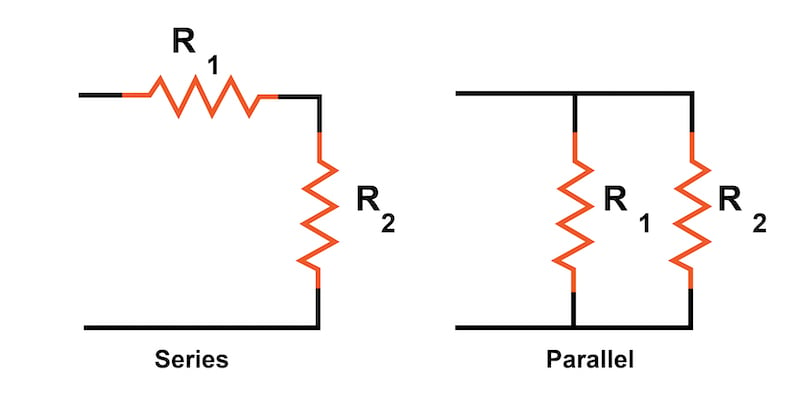Electricity powers the modern world, enabling innovations that improve life daily. Yet the infrastructure guiding this invisible energy remains a mystery to many. By unpacking the inner workings of electrical circuits, you can better appreciate and interact with this critical technology.
The Local Electrician
A guide by TheLocalElectrician suggests homeowners and businesses consider several qualifications when selecting electricians for any project to ensure ideal outcomes both initially and for decades to come. Vetting experience levels, licensing validity, up-to-date insurance policies and bonding demonstrates competence, while also setting client expectations correctly regarding scope and budget based on needs.
Obtaining multiple bids avoids mismatched assumptions. Ensuring proper planning approval and code compliance future-proofs the systems for families or enterprises. Prioritizing safety, quality and value is worthwhile for electrical infrastructure meant to serve communities over generations. With sound partnership, professional services facilitate household and workplace functionality people rely on.
The Flow of Electricity
Electricity arises from the movement of tiny particles within atoms called electrons. Electrons carry a negative electric charge that enables them to flow from one location to another. This stream of flowing electrons makes up an electric current. Electricity relies on closed, continuous pathways in order to flow long distances. These crucial conduits for unlocking electricity’s potential are called electrical circuits.
Key Components for Functional Circuits
For electricity to flow continuously, three vital components must link together:
Power Source
Provides the initial electrical energy to push electrons into motion through chemical reactions (batteries) or induction (generators). Common household sources include batteries, utility connections, solar panels or generators during outages.
Load Device
Modern kitchen appliances, like refrigerators and electric ovens, consume electrical energy to perform their functions, just as lighting fixtures consume electricity to illuminate rooms. Any endpoint device, whether installed in a modern kitchen or elsewhere, depends on the circuit to deliver the electricity it requires to operate.
Conductive Wires
Typically made from materials like copper or aluminum that allow electrons to move freely through them. Wires provide the physical pathway linking the source and load to complete the loop so electricity can flow long distances. Insulated cables prevent shorts.
Current ceases flowing if a circuit experiences an “open” break anywhere along this conductive loop—like flipping a light switch to the “off” position. In a functioning, “closed” circuit, however, electricity flows continuously from the source to the load.
Series vs Parallel Circuits

Electrical circuits come in numerous configurations optimized for different applications. Two fundamental arrangements include series and parallel connections:
Series Circuits: Components link together in a single sequence. Electrons pass through each part as they flow through the loop. Consider old holiday light strings—when one bulb dies, the remaining lights downstream go dark because electrons have only one available path. Series circuits feature simplicity useful in certain situations.
Parallel Circuits: Components connect side-by-side, giving electrons multiple available routes for flowing between power source and load device. Most household wiring uses parallel connections to prevent issues if a path disruption occurs. For example, with parallel wiring, a busted bedside lamp will not plunge other rooms into darkness! Parallel arrangements minimize disruptions.
Ohm’s Law and Kirchhoff’s Laws
Several key principles allow for analyzing circuit behaviors under multiple real-world conditions. These include:
Ohm’s Law: Defines the mathematical relationship between voltage, electric current and resistance within a simple circuit. Increasing or decreasing one value directly impacts the other two according to a linear function. This foundational principle enables predicting outcomes when properties fluctuate.
Kirchhoff’s Laws: Apply conservation logic to more complex systems with multiple interconnections. Kirchhoff’s Current Law sums currents entering and exiting junctions, revealing the balance within a node. Kirchhoff’s Voltage Law calculates voltage drops around multiple loops, unveiling the overall supply and demand. By applying these fundamentals, outcomes can be reliably predicted.
Circuit Protection through Breakers
Circuit breakers provide vital protection by cutting off electricity when dangerous overcurrent situations occur due to overloads or short circuits. Acting similarly to household fuses yet able to reset, these ubiquitous devices limit excessive current flows. Without circuit breakers, even small wiring issues could create uncontrolled electricity delivery with catastrophic overheating risks. Located inside service panels, they automatically deactivate affected circuits during troublesome spikes or surges. Though mundane in appearance, their role in maintaining safety is profound.
Causes Behind Equipment Failure
Detecting deteriorating components proactively prevents disruptions and danger. Overloads from sustained excess current slowly overheat wires and terminals. Intermittent connections create sparks and electromagnetic distortions. Short circuits divert electricity past safety mechanisms. Monitoring key parts like aged insulation, corroded connectors or overloaded transformers reduces these risks through timely repairs or upgrades. Diagnosing failure causes is crucial knowledge for preventing problems.
Safety Protocols and Personal Protective Equipment
All electrical work requires safe practices – both personal and property protection depend on it. Electricians like the ones on this website understand safety protocols and this is why professionals should always deal with electrical systems. Simple guidelines include switching off power upstream before exposures, using insulated tools rated for circuits, testing for absence of voltage and keeping hands dry when energized.
Additionally, commercial and industrial sites often warrant stringent lock-out/tag-out procedures, restricting access until proving deactivation to prevent accidental reactivation. While electricity enables modern achievements, respecting these hazards by learning consensus safety protocols protects lives.
Common Household Circuit Types
Home electrical systems comprise various circuit types tailored to power different rooms and applications. While terminology sounds complex, recognizing basics aids troubleshooting and smart enhancements.
Lighting Circuits
Supply electricity to illumination fixtures like chandeliers, recessed lighting and exterior spotlights. Often utilize multiple switching circuits allowing control over specific zones both inside and outdoors independently. Switches have two conductors – “line” carries power continuously while the other connects lighting.
Outlet Circuits
Feed electricity to everyday plug-in devices around your home office equipment, kitchen appliances, charging cords and cleaning tools constantly draw from these. Outlets branch multiple directions yet connect back to a communal terminal where hot and neutral wires tie together.
Appliance Circuits
Dedicate power for major stationary equipment like HVAC systems, water heaters and built-in electric ovens/ranges. Though wired directly, these circuits connect via an outlet or junction box for diagnosing issues. Appliances require heavy-gauge wires and overcurrent protection matched to their specifications.
Critical Circuit Protection Devices
Beyond fuses and breakers, advanced electrical components add intelligence, efficiency and resilience. These devices deserve recognition for quietly guarding against catastrophe.
Surge Protectors
Protect sensitive electronics from voltage spikes harming internal circuitry. Adding extra surge protection between equipment and outlets prevents damage to expensive investments.
Arc-Fault Circuit Interrupters
Specialized breakers detecting hazardous electrical arcing sounds within damaged wiring, preventing potential fires. Required in new bedroom construction but worthwhile upgrading elsewhere.
Ground-Fault Circuit Interrupters
Sense current leakage to ground and cut power in milliseconds if thresholds exceeded. Usually installed within bathrooms, kitchens and exterior outlets as protection from short-circuit electrocution risks.
Home Electrical Hazards to Mitigate

While wired systems operate reliably for decades, eventual issues arise from age, accidents or disasters. Catching small signals prioritizes safety.
Frayed Wiring Insulation
Exposed copper conductors risk arcs, shocks or fires. Replace damaged sections immediately before harm occurs.
Warm Outlets/Plugs
Frequent overloads strain components and connections. Inspect for loose plugs or degraded parts before catastrophic failure.
Burning Smells
Unusual odors signal potentially dangerous situations like overloaded motors or short circuits. Unplug devices and call licensed electricians promptly. Thoroughly investigate all warning signs.
Closing Thoughts
This guide illuminates electrical circuits powering homes and workplaces. While advanced in function, safety requires understanding risks alongside benefits. Learn your systems, catch problems early and partner qualified professionals when concerns arise. Future innovation promises greater efficiency through smarter technologies and renewable integration as society progresses. Electrical knowledge empowers individuals, while protection and preparedness offers peace of mind benefiting whole communities.











